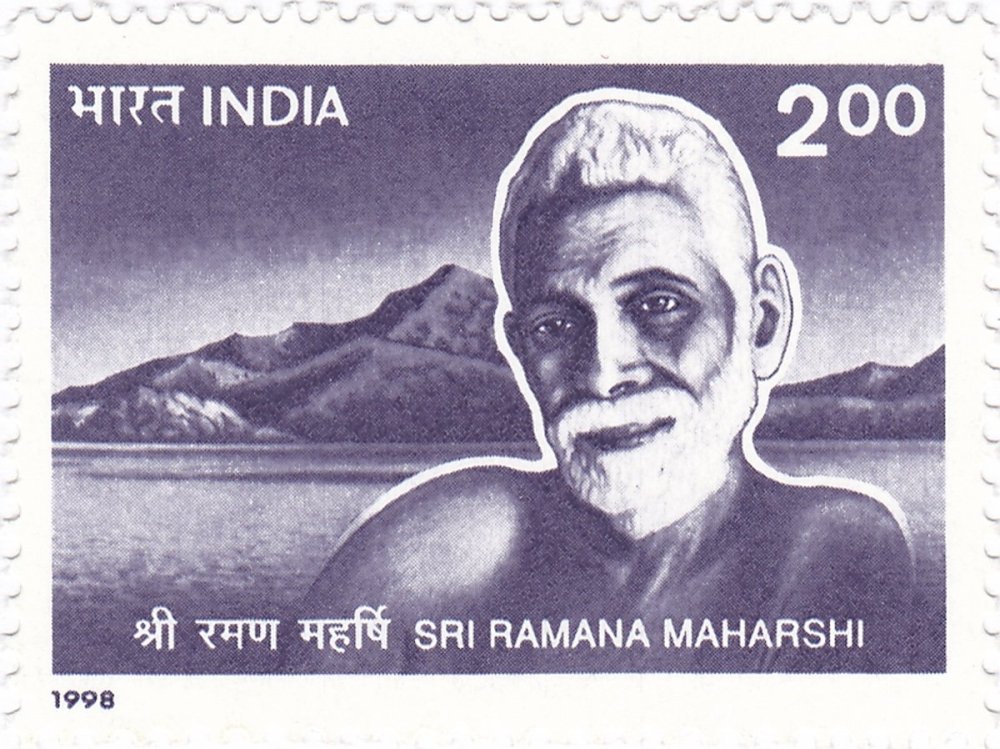At its core, self-inquiry is the persistent introspection on the question “Who am I?” to discover the source of the Self. Rachel Markowitz explores the fuller meaning of self inquiry, and shares steps to start practicing it.
About 12 years ago, towards the end of a month-long program at a yoga retreat center in Central America, I was paired with a coursemate for an “authentic relating” exercise. Our facilitator instructed us to take turns asking each other one question.
However, unlike in a typical conversation, the person answering the question was required to speak for five minutes non-stop; and, the person listening would do nothing but listen mindfully – no nodding, no uh-huh-ing, no reactions whatsoever – while keeping their eyes fixed on the speaker. This particular workshop is particularly memorable to me because of its provided prompt: “Who are you?”
Like most people in the room, I was caught off guard by this provoking question, unsure how to answer. Yet, with a timer ticking away and my heart open and vulnerable from a month of living in community, I began to fill the silence by voicing streams of thoughts.
At first, my answers felt shallow – a list of pronouns, roles, and qualifications about my past and present life. However, as I continued to sort through my initial impressions, my answers became more profound until, suddenly, I realized that my real response was beyond words.

Self-inquiry is a practice of looking within with questions
So, although my introduction to self-inquiry – sometimes written as self-enquiry – was not through a traditional method, it brought me clarity about something I had never considered before – that I am not my body, not my emotions, and, as confusing as it was to me at that point in life, that I am also not my mind or a mere soul on some journey.
Personal experiences aside, self-inquiry is known throughout spiritual traditions as a powerful method for bringing about paradigm-shifting changes to constructs about life and Self. So, let's take a deeper look at the meaning of self-inquiry, its origins, and how you can begin to practice self-inquiry with questions.
What is the Meaning of Self-Inquiry?
Self-inquiry, or atma vichara in Sanskrit, is a practice of looking within for the source of the Self. This inquiry most commonly takes the form of a simple question directed at ourselves: “Who am I?”
Unlike my introduction to self-inquiry, the practice is not actually to answer this question or contemplate it with the mind – it’s simply to ask and observe. Teachings revolving around self-inquiry suggest that when we directly question “I,” (also known as the ego), the construct of “I” has nowhere to hide.
“Self-inquiry is a practice of looking within for the source of the Self. This usually takes the form of a simple question directed at ourselves: “Who am I?.”
Thus, with repeated interrogation and sustained introspection, our sense of “I” eventually subsides, revealing our true nature. When “I” falls away, we are left with pure awareness because every thought we could possibly have depends on the existence of “I.”
Is Self-Inquiry Meditation?
Although many people label self-inquiry as “meditation,” this can be a bit misleading. In meditation, there is an object upon which we are meditating (the breath, a mantra, an energetic sensation, etc.)
Alternatively, with inquiry, the focus is inward on the self as a subject. When we question ourselves, we begin to see that this subject, “I,” is based on the false assumption that our mind is real! Thus, successful inquiry leads to a lack of separation between subject and object.

“Who am I?” is the key self-inquiry question
On a similar note, it’s important to mention that when we practice self-inquiry, the question “Who am I?” is repeated frequently – but not as a mantra (commonly used in meditation). If “Who am I?” becomes a mantra, there is separation between the meditator and the object of meditation; thus, we lose focus on the Self.
One of the benefits of self-inquiry is that you don’t need to sit and close your eyes to practice. While it certainly helps to devote a set time to doing this, you’ll find that eventually, your inquiry will happen naturally and spontaneously throughout daily activities.
Self-Inquiry as a Path to Liberation
According to Advaita Vedanta, or the path of nonduality, the practice of self-inquiry is a direct method to experience self-realization.
Atma (self) vichara (inquiry) as a path to liberation is encouraged and explained throughout ancient texts including, amongst many others, the Bhagavad Gita, Ribhu Gita, and Yoga Vashishta.
However, self-inquiry “meditation” is practiced today largely due to the influence of Sri Ramana Maharshi, an Indian sage or jnani, who realized the Self through a lucid experience of death as a teenager.
“Self-inquiry is a powerful and straightforward technique for disidentifying with the typical moment-to-moment mental chatter of the Egoic mind.”
Although Ramana Maharshi is primarily known for his silent presence, he often referenced the scriptures above as validation of his own experiential teachings and, furthermore, provided clear instructions for self-inquiry.
These basic steps are outlined in the pamphlet “Who Am I?”, and are also described in more detail in the book “Maha Yoga,” which, by its translation, identifies self-inquiry as the “Great” yoga.
In fact, in Sri Ramana’s own words, “Self-enquiry is the one infallible means, the only direct one, to realize the unconditioned, absolute Being that you really are.”
However, even if your spiritual path is unclear and self-realization is not your intention, questioning your self-nature can provide balance, clarity, and authenticity in all areas of life.
How To Practice Self-Inquiry
According to Ramana Maharshi’s teachings, self-inquiry is an advanced practice. However, in this case, “advanced” refers to mature spiritual seekers. Thus, if you’re called to investigate the nature of Self through inquiry, this curiosity is likely credential enough.

Ramana Maharshi celebrated on an Indian stamp
Nevertheless, to begin to practice, you’ll need to learn to calm your mind! You can do this by following your breath, focusing on your heart center, or any other concentration method that works for you.
Once your mind feels peaceful and present, you can begin to inquire:
- When a thought arises, ask yourself, “To whom is this thought?”
(Your answer will likely be something like, “To Me.”)
- Ask yourself, “Who Am I?”
(This question will confound your rational mind and direct it to the source of “I,” extinguishing all other thoughts, which cannot exist without the “I-thought.”)
- When another thought comes, repeat this process.
With practice, you’ll find that your mind will begin to rest, effortlessly and thoughtlessly, in the spiritual heart center – the source, according to Ramana Maharshi’s teachings, of the “I-thought.”
In other words, the spiritual heart is the place from which the ego arises. Once you can fix your mind in this space of pure awareness, you can stop your inquiry and remain as you are, free of “I.”
“According to Advaita Vedanta, or the path of nonduality, the practice of self-inquiry is a direct method to experience self-realization.”
These steps are merely the beginning of a self-inquiry journey. For further instructions and inspiration, I recommend consulting the link to “Maha Yoga” in the previous section or reading other works from the Maharshi’s devotees. As Sri Ramana points out in a poetic verse of Upadesa Undiyar, “The Essence of Instruction”:
“When one turns within
and searches whence this I-thought arises,
the “I” vanishes – and wisdom’s quest begins.”
Other Self-Inquiry Questions and Methods
Throughout the past century, followers of Ramana Maharshi have adapted his teachings and created variations to his “Who am I?” approach.
For example, spiritual teacher Robert Adams offered alternative questions for self-inquiry, including:
- What is this “I” that exists at all times?
- Where does this “I” come from?
- Who am I that slept last night?
- Who am I that has just awakened?
- Who am I that exists now?
Additionally, spiritual seekers often benefit from contemplation or meditation on self-inquiry using partners or groups, like the exercise I described in the introduction to this article.
RELATED:
- What Goes Around Comes Around: Is Karma Real?
- What is Enlightenment In Buddhism?
- Feeling Lost in Life? Move On In 7 Steps
According to Daniel Schmidt, founder of the Awaken the World Initiative, who facilitates self-inquiry dyads, holding oneself accountable to a witness creates “conditions of no escape for the ego structure and for the awakening of the realization of your true nature.” In these dyads, instead of asking partners a question, one person prompts another in a statement, “Tell me who you are.”
Takeaway: What is Self-Inquiry?
Self-inquiry is a powerful and straightforward technique for disidentifying with the typical moment-to-moment mental chatter of the Egoic mind. Ancient and modern-day spiritual teachers alike suggest that “Who am I?” is the ultimate question along the path to spiritual wisdom.
With patience, perseverance, and sincerity, this simple method of introspection can guide us towards an all-pervading sense of peaceful, everlasting presence.
Images: shutterstock/rdonar, Wikimedia Commons, shutterstock/JLco Julia Amaral
happiness.com | The fine art of being: learn, practise, share
Are you a happiness.com member? Sign up for free now to:
■ enjoy our happiness magazine with practical life tips
■ share and support others in our happiness forum
Acceptance | Letting go | Happiness | Learning
Written by Rachel Markowitz
 Rachel recently found herself over a decade deep in a worldwide wander guided by what she feels to be true. She’s been facilitating classes and workshops on yoga, meditation, self-exploration, and alternative ways of living since 2012, mostly in Latin America and Asia. These days, she spends most of her time looking at, walking around, or singing to a sacred mountain in southern India. Read more of her words at her to those who wonder blog.
Rachel recently found herself over a decade deep in a worldwide wander guided by what she feels to be true. She’s been facilitating classes and workshops on yoga, meditation, self-exploration, and alternative ways of living since 2012, mostly in Latin America and Asia. These days, she spends most of her time looking at, walking around, or singing to a sacred mountain in southern India. Read more of her words at her to those who wonder blog.
Join the conversation
You are posting as a guest. If you have an account, sign in now to post with your account.
There are no comments to display.